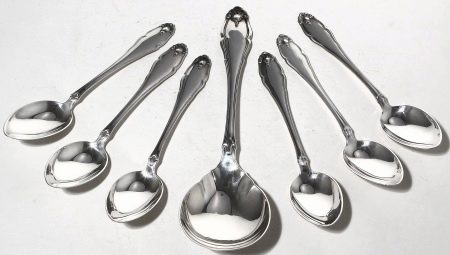The name of the creator of the spoon is impossible to name - it has been lost for centuries, but without a doubt this cutlery was invented in ancient times and it is much older than the fork, which became widespread only in the 17th century. The solid age of the spoon is confirmed by a large number of folk wisdom, such as “a spoon is good for dinner”, “seven with a bipod - one with a spoon”, which were invented by people in ancient times.
It is noteworthy that during the evolution of kitchen utensils, the spoon did not undergo any changes, however, many varieties of it appeared that have their own individual purpose.
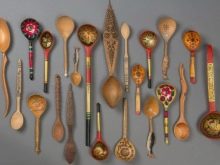

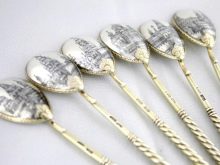
Description
A spoon is a piece of kitchen utensil made of wood, plastic or metal. It serves to scoop up food products and transfer them for the purpose of further absorption. However, today the scope of use of the spoon is not limited to this - It is known as a musical instrument, with this cutlery, doctors often examine the throat and even do cosmetic massage.
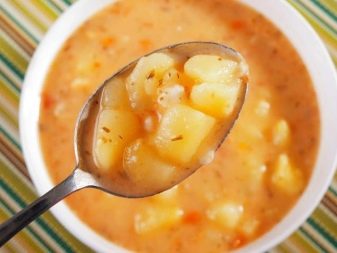
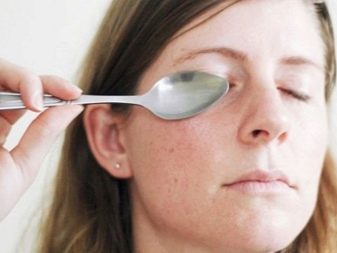
Any spoon consists of several elements:
- slurp - This is the basic working part of the spoon, which is used directly for scooping and moving the product;
- supported - necessary to maintain and manage the structure;
- jumper - connects working parts to each other.

Appearance story
Spoon - this is one of the most popular cutlery, which is widely used around the world. According to etymology, the definition of “spoon” comes from “log”, which means “deepening”, “lowland”, “ravine”, although this issue is today considered controversial.According to some versions, the word "spoon" comes from "lick" or "crawl".
A spoon was born much earlier than a fork. Data from archaeologists confirm that as early as the III century BC. e. people used spoons in their shape. Later, spoons began to be made from burnt clay - at that time they were shards with handles. After several centuries, noble materials began to be used to make this cutlery - animal horns and bones, wood, natural stone, sea shells and even walnut shells. In ancient Greece and Rome, spoons began to be made of bronze and silver.
By the way, during this period they were used in the kitchen as scoops and stirrers, and people ate with their hands directly from the dish, and in order to pick up pieces of food, they used bread.

In Russia, wooden spoons had already appeared at that time, which were even mentioned in the "Tale of Bygone Years" of the 12th century. Spoons are widespread, and it was considered good form to go on a visit with their cutlery. At that time, there was even such an object as a folding spoon.
In the Middle Ages, metal became the material for making spoons - representatives of aristocratic families used silver and gold devices. In the XVIII century, aluminum devices became very popular, since this metal was considered very expensive. So, at the court of Napoleon during the ceremonial receptions, the most honored guests were served with spoons of this particular metal.
It's funny that later the material became the main sign of cheap Soviet catering.
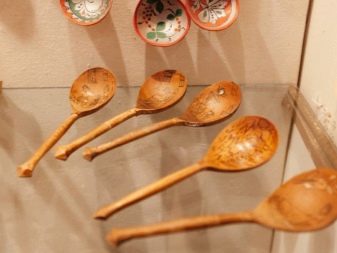
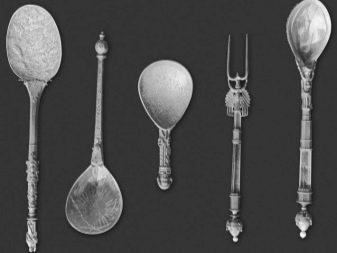
At the end of the XVIII century, spoons took an ellipsoidal shape, close to modern. The same period is characterized by increased interest in Chinese and Japanese culture. A huge number of items brought from these Asian countries instilled interest in the Old World in tea ceremonies - it was at this time that a teaspoon appeared. And after the Europeans discovered coffee, a coffee spoon was spread. That is precisely how a wide variety of spoons, their shapes and materials, from which cutlery was made, arose.
Baroque made adjustments to the design of kitchen utensils - the handle was slightly extended by the spoon. Presumably, the reason for such changes was the fashion for such items of clothing as frill and wide sleeves.
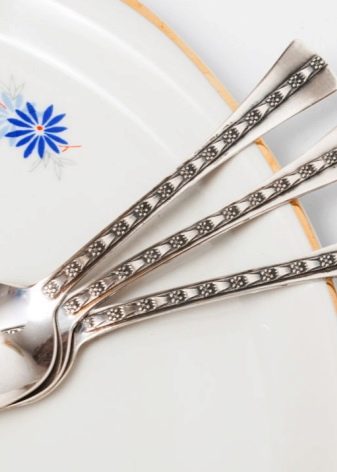

In 1825, cutlery from Argentina, an alloy of nickel, zinc and copper, began to be produced in Saxony. This metal is visually similar to silver, but it is several times cheaper. A few years later, it began to be used for the production of spoons throughout Europe. Now the material is better known as cupronickel and is one of the most popular in the manufacture of spoons to this day.
At the beginning of the last century, the revolutionary discovery of stainless steel occurred, which marked the beginning of a new milestone in the history of cutlery. Thanks to the addition of chromium, the resistance and durability of the material increase, while the risk of corrosion is reduced to almost zero.
To date, a variety of materials are used to make spoons, but silver devices are considered the most high-quality and expensive.
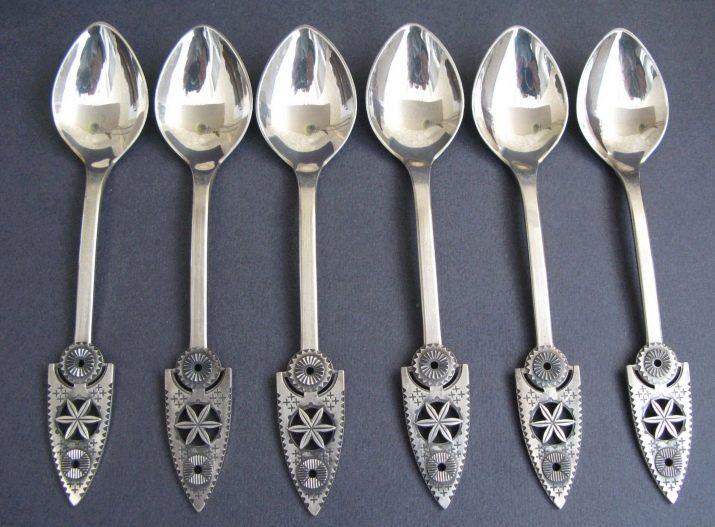
I must say that many legends and beliefs are associated with spoons.
So, in the Renaissance, it was customary to give spoons with the image of Christ for any religious holidays - they were called apostolic.
From time immemorial, silver spoons were given to children when the first tooth appeared. In tsarist Russia, spoons from this noble metal were also given when the baby entered the gymnasium and by the end of his studies. In the first case, a dessert spoon was presented, and in the second, a tablespoon.
Painted wood utensils have always been considered a good wedding present. It was believed that then the home of the young would become a "full bowl" and the couple would never face poverty and misery.
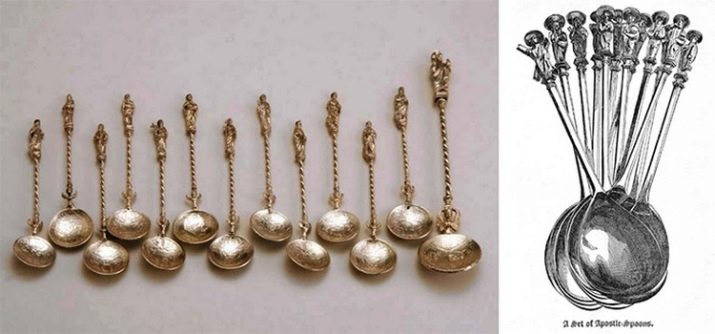
In Cambridge, students who received a low math score in the exams were given a huge spoon - this custom lasted until the beginning of the 19th century. The origins of this unusual tradition go back to ancient times, when in England it was customary to present a spoon as a consolation prize to a person who gave the worst result in any competitions and contests.
Cambridge is not the only university whose traditions are associated with spoons. For example, students at Kazan University until the beginning of the last century believed that to successfully pass the exams, they should put all the teaspoons available in the house the night before the test, put them under a bookcase.
The famous Salvador Dali used a metal spoon instead of an alarm clock. He took the device in his hand, and put a plate of tin on the floor. As soon as the artist began to doze, the spoon fell out of his hands and knocked on a plate with a loud sound, this allowed the artist to quickly wake up and remember the dream he had. It is believed that this helped him create his very best paintings.
By the way, Salvador Dali devoted several of his works to spoons and even created a whole collection of these kitchen appliances.
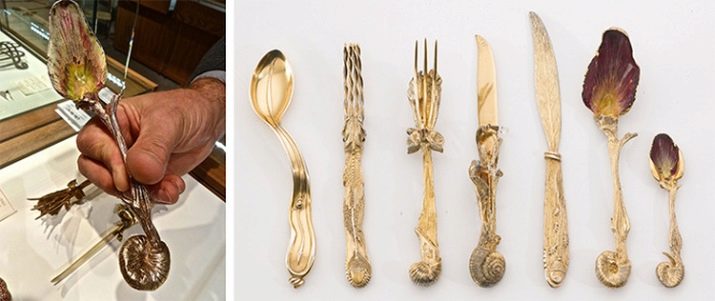
Materials of manufacture
Spoons are made from a variety of materials - there are tin, titanium, silicone, copper and plastic products. Among the most common these days include the following.
- Stainless steel - This is the best option for everyday use. Spoons that are made of this material are not rusty, easy to clean and do not fade over time. These products are of high quality, practicality and quite affordable price.
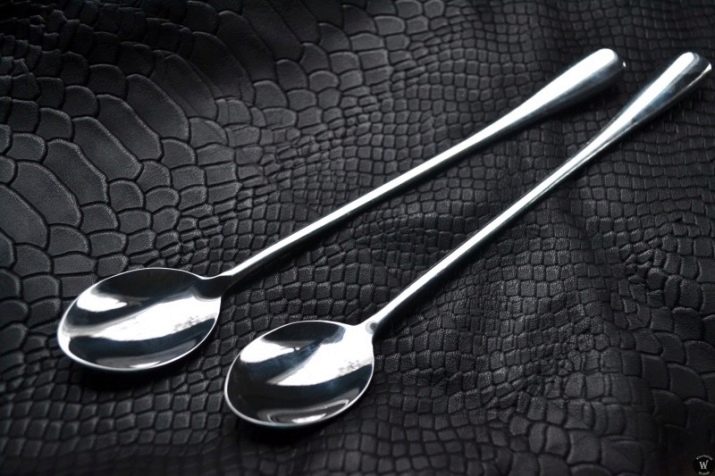
- Chrome Steel - Another good option, which over time does not lose its attractiveness. They are distinguished from stainless steel by a golden shimmering luster. Such cutlery is also used as everyday utensils.
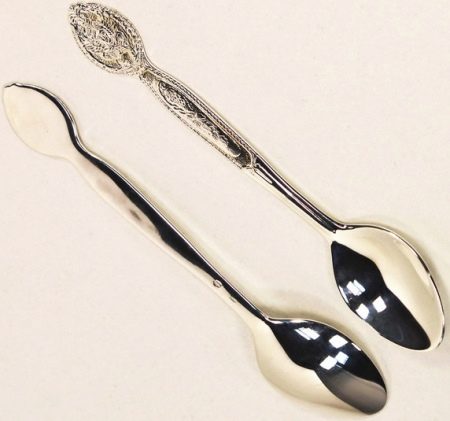
- Aluminum - once popular, but today it is practically not used for making spoons. The fact is that the appearance of the metal is not particularly attractive, in addition, such spoons are easily bent and poorly washed. However, the cost of such devices is very low, which explains their popularity in the Soviet public catering.

- Wood - today such spoons are more often used as a folk musical instrument, in the kitchen they can be used only as an object of decor.
However, some housewives use draft wooden scoops and ladles, and also fit such items for stirring dishes when cooking in a pan with non-stick coating.
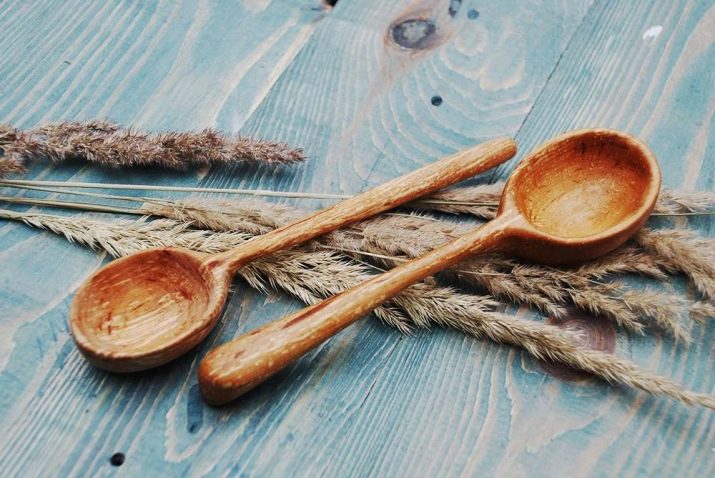
- Ceramics - This option is rather referred to as decorative and gift. The cost of such things is high, because as a cutlery they are used only in expensive restaurants, most often in Asian ones.

- Plastic - It is used for the production of disposable appliances and camping options.
It should be noted that the EU recently passed a law banning the use of plastic dishes. This means that plastic spoons will gradually be removed from the household.
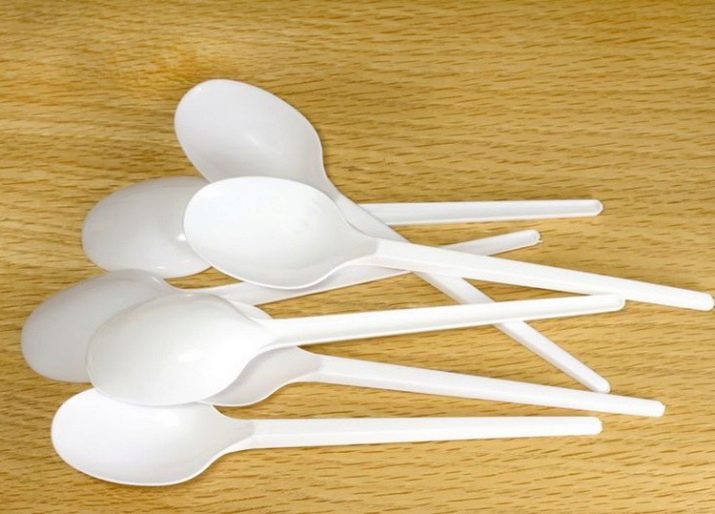
- Silver - A beautiful and expensive material that requires special care. When stored improperly, silver loses its color, darkens and may become scratched. In previous years, cutlery made of this metal served as an indicator of family status, a sign of aristocratic family and financial well-being.
Today they are more often used as souvenir, for example, in baptismal sets.
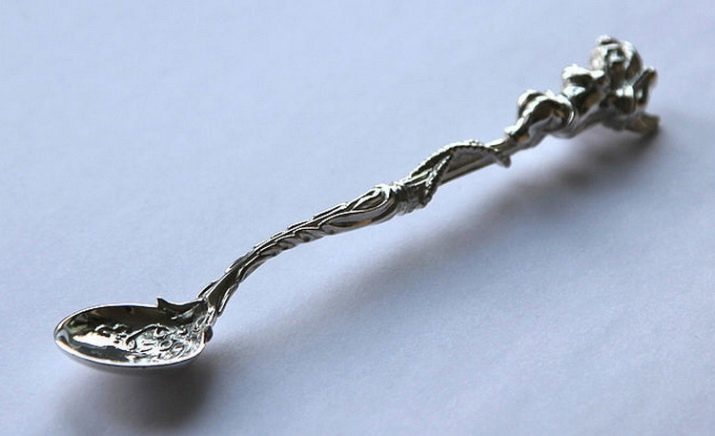
- Cupronickel - This spoon with its attractive appearance is quite capable of competing with silver. Over time, the metal darkens, while returning to its original form is almost impossible.

Types of spoons
Depending on the purpose, the spoons are very different, but they are conditionally divided into two groups - main and auxiliary.
The main cutlery include the following.
- Canteen - this appliance is used for consuming soups and other first courses, as well as porridge from deep dishes. The volume of a tablespoon is 18 ml.

- Dessert - It is used for the use of ice cream, pastries, cakes, soufflés and other desserts from small plates and creamers. These spoons can also be used when serving soups, but only if they are poured into broth cups. The volume of the dessert spoon is 10 ml.
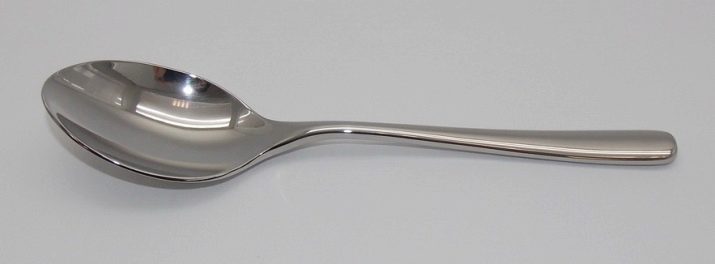
- Tea Room - as the name implies, such a device is needed for stirring sugar in a cup with tea, sometimes it can have dessert functions. The volume of the device is 5 ml.
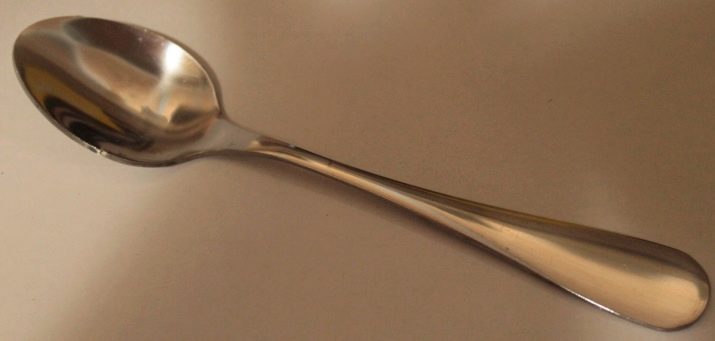
- Coffee shop - indispensable for lovers of latte and other popular coffee drinks. The volume is half the tea volume - only 2.45 ml.
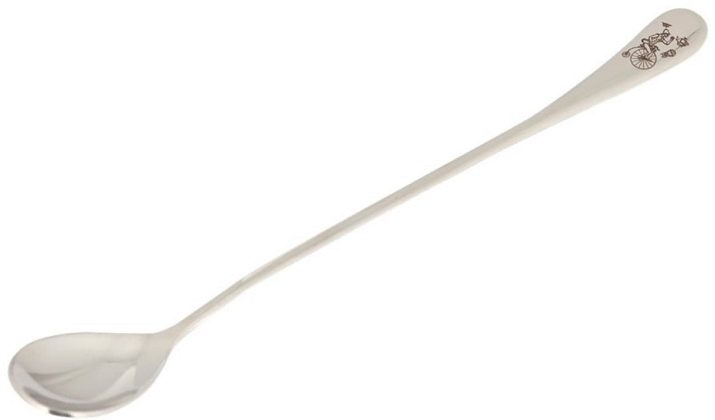
Auxiliary spoons include such.
- Bar - characterized by a spiral or elongated handle with a conical or spherical tip. Such a device is used to make cocktails, mix the ingredients and take out berries and fruits. A ball is necessary for kneading the same berries or, for example, spices.
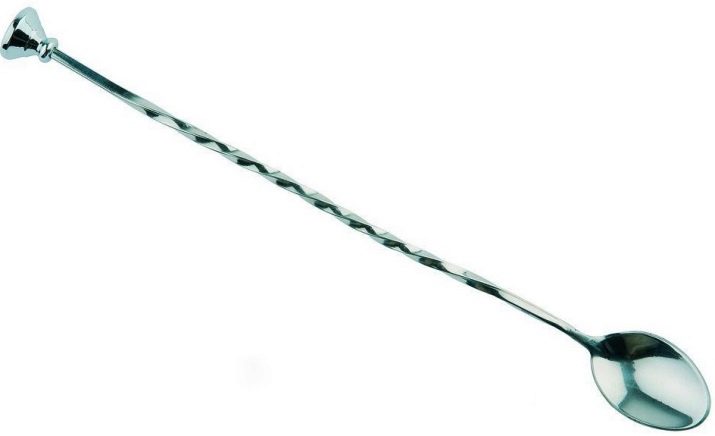
- Broth - a spoon is needed for eating liquid dishes. Usually it has a rather complex shape. Such a device has become widespread in Asian restaurants.

- For absinthe - This spoon is distinguished by a complex curly shape. Usually they put a piece of sugar on it, and absinthe is poured on top.

- For fruits - By its appearance, this piece of kitchen utensil resembles an ordinary tablespoon, but there are notches along the edges, thanks to which it is convenient to pick out the flesh from kiwi and some citrus fruits.
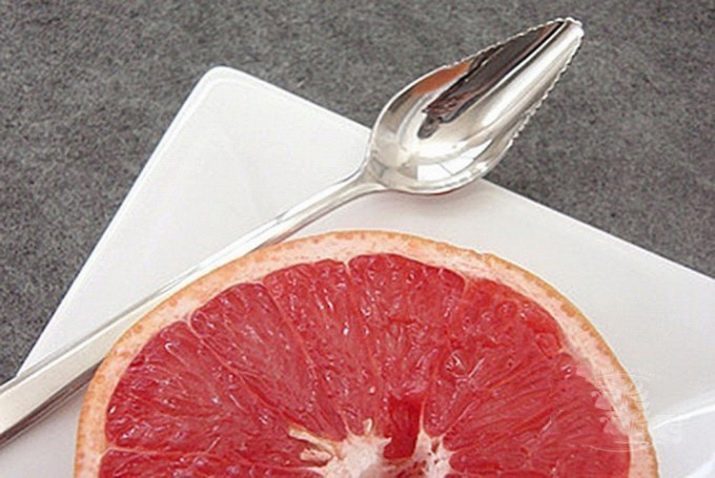
- For olives - This spoon allows you to take olives from canned food with maximum convenience. Such a device has a long handle and a small hole for draining the liquid.
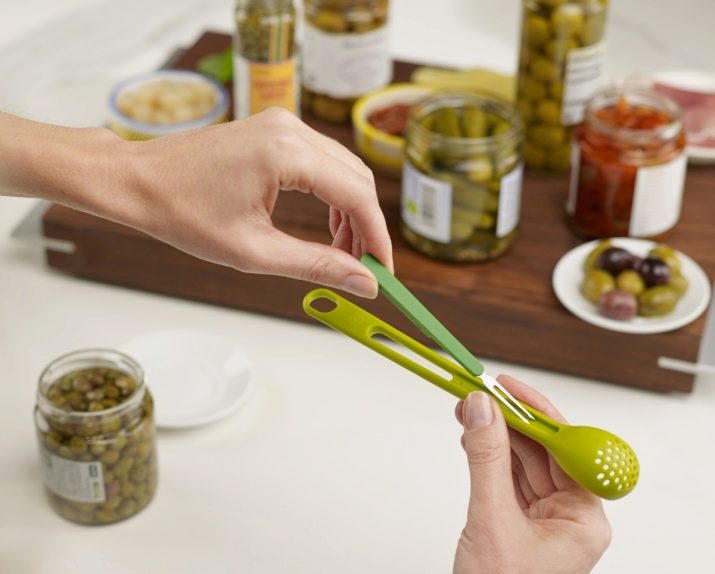
- Sauce - usually comes complete with a sauce boat, characterized by the presence of a spout and an elongated shape.

There are at least several dozens of varieties of spoons - for spaghetti, for salad, side dishes, for brewing tea, for caviar, for donuts, a thermometer spoon, slotted spoon, pouring and others, which are used for a variety of purposes.
How to choose?
Let us dwell on the issues of choosing products for eating.
Wooden utensils, of course, are very elegant, but they are not suitable as cutlery for daily use. These spoons absorb moisture, they are short-lived, and even eating from them is inconvenient. Such devices are optimal during fishing trips with an ear, and in urban apartments it is better to give preference to other materials.
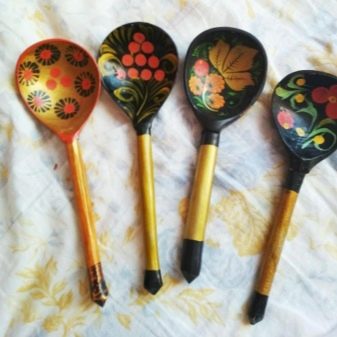
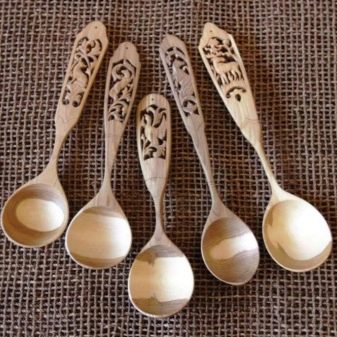
Aluminum spoons can now be found, perhaps, only in the country or at the grandmother in the village. Now, not a single self-respecting mistress decides to buy such devices - they are unaesthetic and impractical, in addition, some experts have expressed the idea of the dangers of this metal.
However, in fairness, we note that many experts question this opinion.
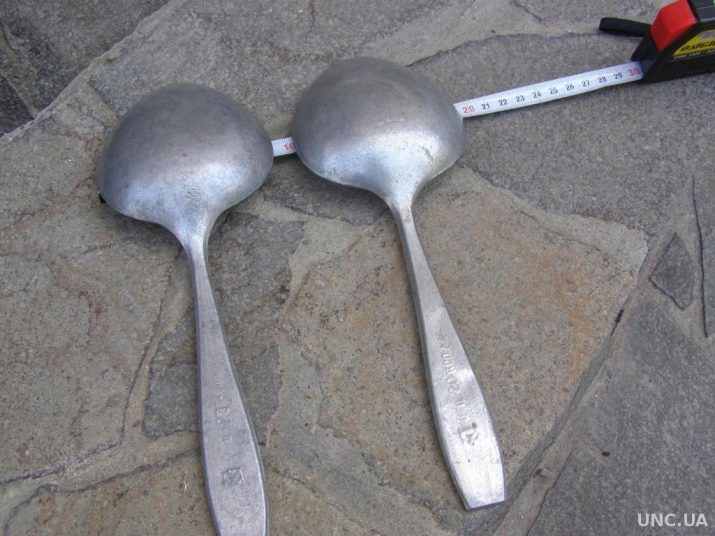
Stainless steel is the best option for everyday use, but be careful - Chinese manufacturers often use low-quality steel in production, so such devices can be at least short-lived, and at most dangerous to life and health.
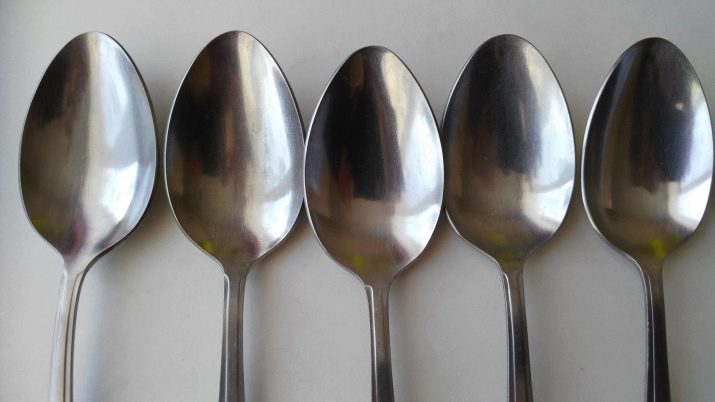
Luxury cutlery is made from cupronickel, which is an alloy of manganese, nickel and copper. Typically, such devices are plated on top with gold or silver.
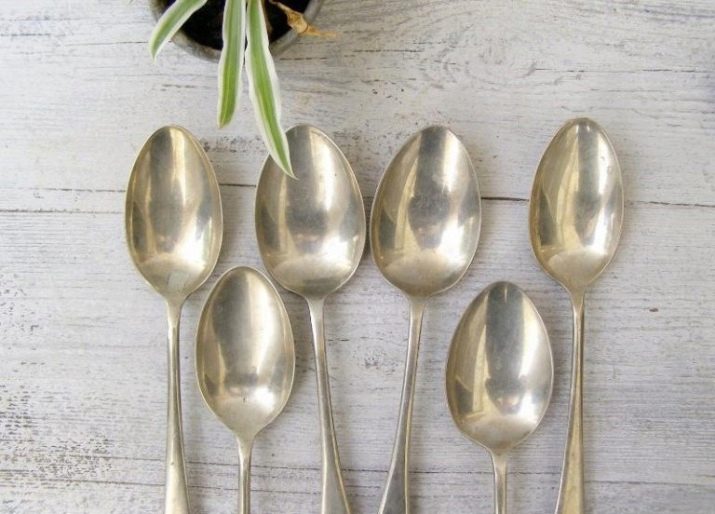
Exclusive kitchen utensils made from silver. Such devices are expensive, so it is important not to be mistaken with the quality of the dishes offered in stores.
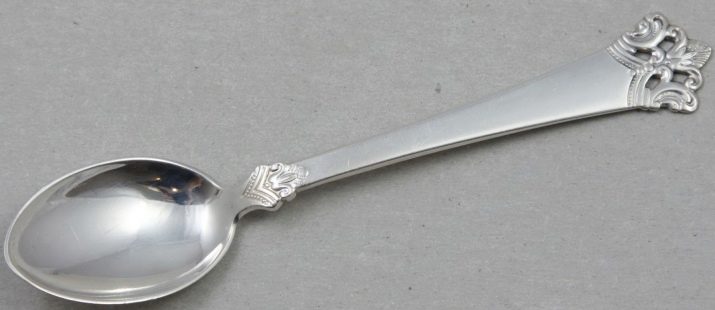
Here are some suggestions for choosing.
- Pay attention to the brilliance of the spoon. Depending on the marking of the steel used, it may be white or grayish. The lack of gloss usually indicates that the steel was not polished or a low quality alloy was used.
- Inspect the edges of the device, swipe them with your fingers. If you notice irregularities and burrs - feel free to refuse to buy, since the use of such spoons is not only ugly, but also unsafe for health.
- For high quality spoons, the bend should be thickenedotherwise they will be easily deformed if the user clicks on them.
- Hold the spoon in your hands, estimate its thickness. In accordance with the standard, it should vary from 1.5 to 4 mm, if the product is already - it is unlikely that it will last long in your kitchen.
- Important point - stamping depth. If you have a device with an almost flat bread in front of you, then with a high degree of probability it is before you consumer goods from China, it is almost impossible to eat from such dishes. Normally, the depth of the cutlery should be 7-10 mm.
- Take a sniff - You should not feel any odor. Some spoons have a pronounced smell of machine oil - it is better to immediately refuse to buy such products.
- Be sure to request a hygiene certificate and a certificate of conformity from the seller. The document must indicate the manufacturer, his address, as well as the name of the brand of cutlery - for example, a spoon "Pavlovskaya".
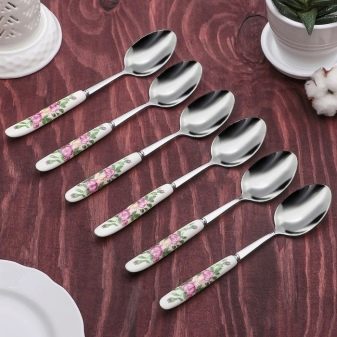
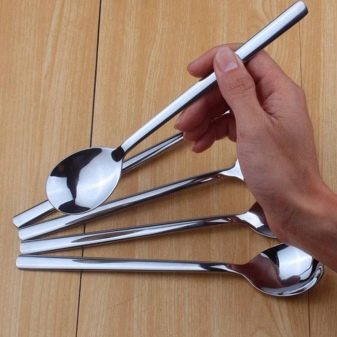
Storage and care
In order for the spoons to serve you for a long time, you need to properly care for them.
Storage of stainless steel appliances is not difficult - you just need to clean them from food debris in a timely manner, wash with special dishwashing detergents and use soft sponges. The use of abrasive compounds and metal brushes is allowed, they will not impair the quality of the products, but their appearance will become less aesthetic.
If such a spoon has been lying in salt water for too long, then iridescent or dark brown spots may appear on its surface, which are easily excreted with a weak solution of citric acid.


Products with plastic handles look very impressive, but there is one big “but” - the plastic is quickly worn away, deformed and scratched, and dirt often gets into scratches. To cope with the cleaning of such devices will help the dishwasher. It must be turned on for low-temperature modes, otherwise the plastic will lose its shape.
Caring for silver and cupronickel instruments resembles caring for jewelry. After each use, such devices must be rinsed in a soda solution (50 g per liter of warm water). From time to time, spoons must be treated with special cleaning pastes, solutions and napkins.
Alternatively, you can use folk remedies. Highly efficient ammonia - its 10% solution is poured into a bowl of water and the cutlery is immersed for 10-15 minutes, after which it is thoroughly washed and wiped dry with a rag.
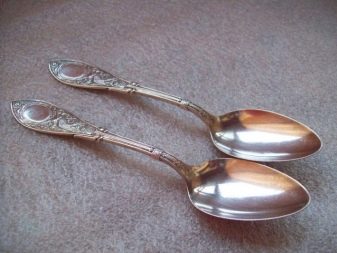

Another interesting way involves using soda. To do this, dissolve 2 tablespoons of the powder in 500 ml of water and put on fire. As soon as the water boils, it is necessary to throw a few pieces of food foil into it, and then put the spoons for 15-20 minutes.
There is an opinion that silver and cupronickel devices need to be cleaned with tooth powder - this is a big mistake, because when using such products microcracks appear on their surface and dirt accumulates in them, as a result spoons lose their appearance. The use of chlorine-containing agents is strictly unacceptable. This element accelerates the oxidation of silver many times, which makes kitchen utensils not only ugly, but also harmful to the user's health.
Devices made of silver and cupronickel can be washed in a dishwasher using aggressive means with gentle temperature conditions.


See how to clean stainless steel spoons in the next video.
